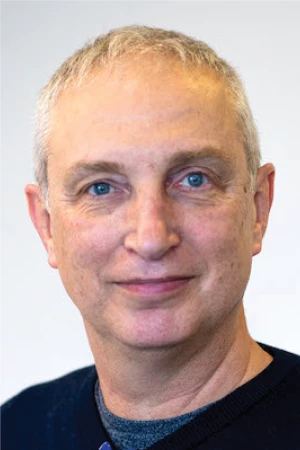OMPRN is honoured to welcome Dr. Uri Tabori, Section Head of Neuro-Oncology at the Hospital for Sick Children (SickKids) in Toronto, and professor in the departments of Medical Biophysics, Institute of Medical Science, and Paediatrics at the University of Toronto. Dr. Tabori has devoted his career to the treatment of children with cancer, with a particular focus on brain tumors, combining cutting-edge research with compassionate clinical care. Having trained and begun his career in Israel, Dr. Tabori completed his fellowship at SickKids and has since become a leader in pediatric neuro-oncology.
In this interview, we explore his journey, the advances in childhood brain cancer treatment, and his vision for the future of pediatric cancer care. Join us as Dr. Tabori shares his expertise and insights into how research and personalized medicine are shaping better outcomes for young patients.
Interview conducted by Karen Haas via email on October 3, 2024.
Download a PDF handout of the interview below:

Dr. Tabori, please tell us a bit more about the patients you typically treat?
During the week I focus on paediatric patients with brain tumours. On weekends, I also treat paediatric patients with different cancers.
How do you determine the treatment plan for each pediatric patient?
The treatment for each type starts with each tumour and each genetic mutation. If there is a clinical trial, we enroll our patient in the trial. If there is no clinical trial, we treat our patient with the standard of care that is uniform across Canada.
If you would like to learn more about clinical trials, please take a look at our clinical trials video.
What other professionals are involved in the diagnosis and treatment of a pediatric patient?
For pediatric patients who have a brain tumour, the other professionals who are involved include neurosurgeons, radiation oncologists, neuropathologists, neuro imaging technologists, nurses, nurse practitioners, social workers, psychologist and neuropsychologists, occupational therapists, physiotherapists, and endocrinologists.
To learn more about the different professionals involved in cancer care, please consult our ‘support professionals in cancer care’ infographic.
Are you able to develop personalized treatment plans for your patients?
Yes, precision oncology allows for a personalized approach.
How do you stay updated with the latest research and treatment options in oncology?
The world of neuro-oncology is a community that interacts frequently through multiple meetings every year, routine emails, and sharing of new papers with research studies and findings.

Are you involved in research? If so, what is/are your research focus(es)?
My research focus is on translational medicine in pediatric brain tumors, cancer genetics and low-grade gliomas.
“Molecular pathology enables personalized medicine. Each patient’s genetic mutations determine the medicine or treatment needed”.
How does molecular pathology relate to the diagnosis and treatment of paediatric brain tumours?
Molecular pathology enables personalized medicine. Each patient’s genetic mutations determine the medicine or treatment needed.
To learn more about molecular pathology as a discipline, please look at our ‘what is molecular pathology’ infographic as well as our video on ‘what does a molecular pathologist do?’.
Conclusion
We are incredibly grateful to Dr. Uri Tabori for sharing his valuable insights into the complex and evolving field of pediatric neuro-oncology. His dedication to providing personalized, cutting-edge care for children with cancer, alongside his collaborative approach with a diverse team of professionals, highlights the critical role that precision medicine and molecular pathology play in shaping the future of treatment. Thank you, Dr. Tabori, for your time and for your continued efforts to improve outcomes for pediatric cancer patients.
Become a Member
OMPRN connects pathologists and molecular pathology researchers across Ontario. Become a member to access exclusive research, educational and networking resources.
OMPRN’s patient resources
OMPRN aims to meet the education needs of everyone, from budding researchers to patients and members of the greater patient community.


